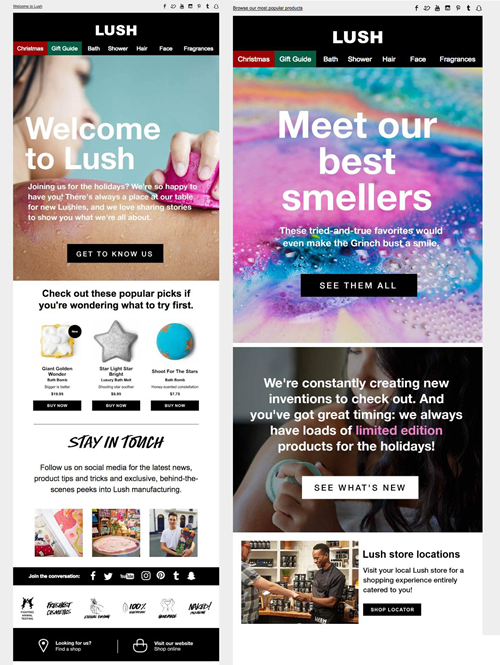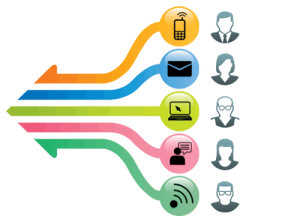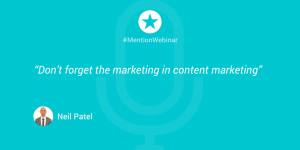— December 24, 2017
So, how’s your holiday email-marketing program faring?
The season got off to a roaring start with a record-setting Thanks-into-Giving Week, the six-day spending spree that launched on Thanksgiving Day and closed on Giving Tuesday. By all accounts it was a banner year for email – revenue up 14% and orders up 12% over 2016, with email driving 23% of sales on Black Friday alone, according to MediaPost.
You’re probably tracking sales and revenue closely, as you should, because you have to report on them to your team and your boss. But three other areas can affect your performance and might not be so obvious.
Email Stress Test #1 – Trends in email activity.
This includes opens and clicks on your emails as well as other stats, such as read times. These are important to track because they reflect what your subscribers are doing with their emails.
You might have heard some email experts downplay the importance of tracking open or click rates. That’s because some marketers use opens and clicks to measure a campaign’s success or their email program’s overall performance.
If all you want to achieve is awareness, opens and clicks might do the trick. But the last time we checked, most marketers use email to make money.
- Opens and clicks don’t help you report on conversions, orders, sales, average order size or total revenue.
- These are “outcome” metrics, because they measure the outcomes of your campaigns.
Opens, clicks, read times, unsubscribes and other behavior-based metrics are “process” metrics, because they show you what your subscribers are doing with your emails. The best way to understand these metrics is by tracking trends and comparing them in the short term and the long run.
Email stress test questions to ask of your data:
- Are opens and clicks trending up or down?
- Did unsubscribes spike or plummet on a specific day?
- Do subscribers who open your emails look at them for a second or two and then discard them, or do they give your emails a longer look?
- Do you see regular up-and-down cycles or spikes?
Questions like these can give you better insights into what your subscribers are doing with your emails and, by inference, what they think of your emails. They can also help you identify new segments within your database for more targeted messaging when you pair them with other data, such as purchases, downloads or other conversions.
You might find a big group of subscribers open your emails regularly but convert only once every three or four months. A VIP club or special focus group, with special deals just for these engaged subscribers, could turn them into more frequent buyers.
Email Stress Test #2 – Opt-ins through your website and other sources.
The holiday season is a bonus, not just for sales but also for acquiring new customers. They don’t even have to be buyers – people who find your site through search or other sources can request your email now and come back to shop later.
Do you track acquisitions by source?
If not, now is a good time to start charting them so you can build up a good set of data throughout 2018.
Are clicks on your opt-in links and completed opt-ins below expectations?
Once again, if you don’t track these, you should start now so that by the next the next holiday season rolls around you’ll have a solid set of data to guide expectations and planning.
- If you aren’t seen the rate of clicks and opt-ins you would expect, you probably need to tweak your opt-in invitation or add them to new places.
- You still have time to do that this holiday season if you can snag some time with your web developer and look for places to make easy changes.
Logical locations are your landing pages associated with your search campaigns, product pages and social media outlets. If you have some spare change in your acquisition budget, put together a quick Facebook or Twitter campaign to target nonsubscribers.
Then, for next year, think about doing something more structured to reach out to lapsed customers. Our Audience Connector for Facebook service can help with that.
Email Stress Test #3 – Activity by your new subscribers.
A lot of marketers assume that their acquisition job is done as soon as someone opts in. The hard work is just beginning!
Customers who join your email program during the holidays are either buyers or people who are more interested in your brand and products than the average browser. But that interest can wane once the holidays are over, even as early as just a couple of weeks after opt-in.
So, it’s more important than ever to reach out to your newcomers and to keep tabs on whether they continue to open, click and convert after the holidays.
- More marketers are using onboarding programs, which are a special set of emails to welcome new subscribers, reinforce your brand and email values and cement the relationship early on.
- At the very least, send a special welcome email that lets your new subscribers know you value their data.
2017 Holiday Emails We Love:
We love these two welcome emails from Lush, which are custom-tailored for new customers who opt in during the holidays.

The top navigation bar places “Christmas” and “Gift Guide” next to each other on the far left and in attention-getting red and green reverse bars. It’s a great way to appeal to people who are still in shopping mode.
The copy in each email greets new subscribers as holiday shoppers (“Joining us for the holidays? We’re so happy to have you!” in the first email, and “These tried-and-true favorites even would make the Grinch bust a smile.” in the second.
Each email focuses on bringing the new subscriber deep into the Lush fold. The messages promote the brand value, highlight popular products to guide buying decisions and invite the subscriber to stay connected through social media.
Also, see how the follow-up welcome message calls out new products to keep subscribers coming back after the holidays. And that warm, friendly tone throughout can’t help making newcomers feel as if the brand truly values them.
What to do after the holiday crush subsides
You’re probably starting to think about post-holiday planning – maybe you’re even working on Valentine’s Day as we speak!
Once you finish up your holiday season reporting, take some time to start building a new database using the email three stress tests we discussed in this post. All you need is a simple spreadsheet – or even pencil and paper if that’s faster.
The most important thing is to start collecting and comparing the data. It will help guide your planning, testing and improvements for 2018. By the next the next holiday madness descends, you’ll be ready!
Digital & Social Articles on Business 2 Community
(69)






